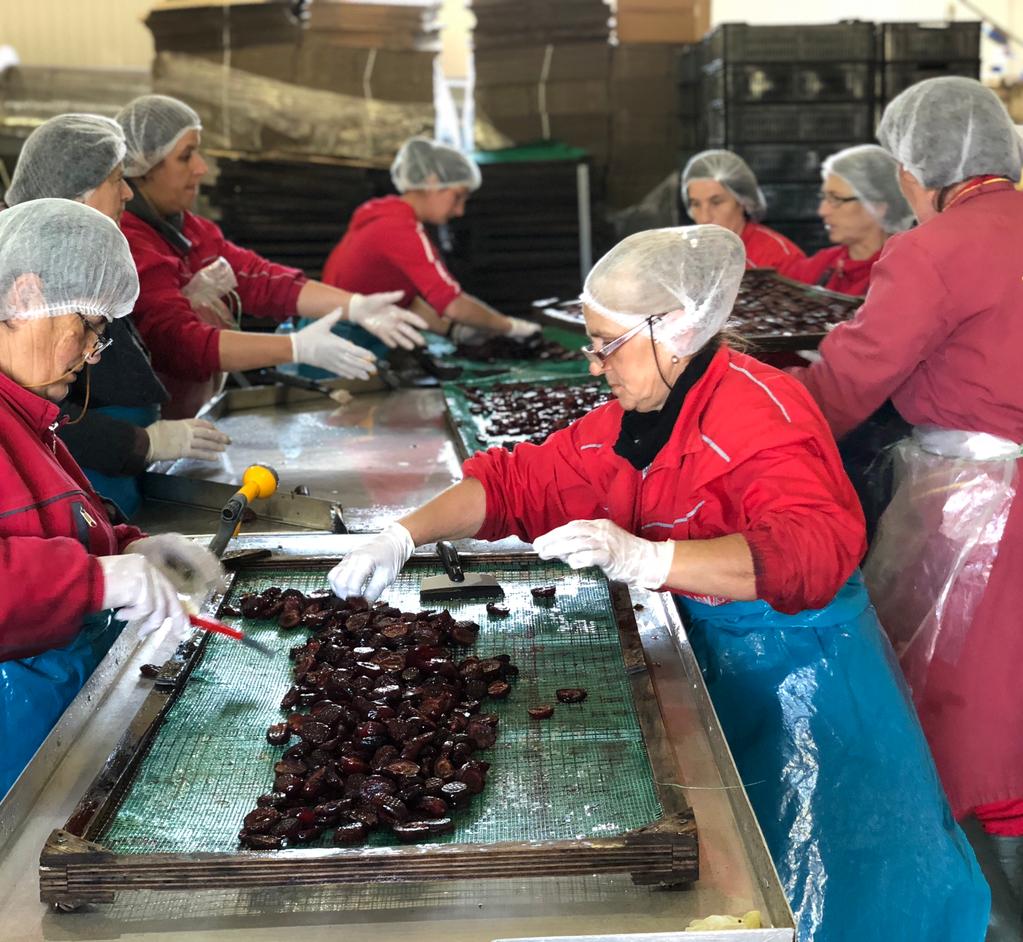Frubert super ladies working at Serbian facility with osmotic dehydration process undergoing.
What is Osmotic Dehydration?
Osmotic dehydration is a process of removing water from fruits, vegetables, or other food products by placing them in a concentrated solution of sugar or salt. In this process, the high concentration of solutes in the solution draws out water from the food, thereby reducing its water content.
Osmotic dehydration is commonly used in the food industry as a pre-treatment process before further processing or preservation. The process helps to improve the shelf-life of food products by reducing the water activity, which inhibits the growth of microorganisms and slows down the rate of deterioration.
The osmotic dehydration process is also used to enhance the sensory properties of food products. For example, it can be used to add sweetness to fruits or to reduce the bitterness of vegetables. The process can also help to preserve the natural color, flavor, and texture of the food product.
Overall, osmotic dehydration is a useful technique in the food industry for improving the quality and shelf-life of various food products.
How osmotic dehydration is better than normal dehydration?
Dehydration is a common method used for preserving food by removing water from it. However, the traditional dehydration method has some drawbacks, such as loss of nutrients, flavor, and texture. Osmotic dehydration is a newer method that has been developed to address these issues and is considered to be a better method of dehydration compared to normal dehydration.
Osmotic dehydration is a process in which food is immersed in a hypertonic solution, which means the concentration of solutes in the solution is higher than that in the food. As a result, water moves out of the food and into the solution, thereby reducing the water activity of the food. This process helps to preserve the food by inhibiting the growth of microorganisms and enzymes, and also helps to retain the food’s flavor, texture, and nutritional value.
There are several advantages of osmotic dehydration over normal dehydration. Firstly, osmotic dehydration is a milder process, which means that the food is subjected to less heat and hence less damage to its nutritional value. Secondly, the use of a hypertonic solution in osmotic dehydration helps to retain the food’s natural color, texture, and flavor, which can be lost during normal dehydration. Additionally, osmotic dehydration can be used to remove excess salt or sugar from food, which is not possible with normal dehydration.
Osmotic dehydration is particularly useful for fruits and vegetables, which are highly perishable and have a short shelf life. Osmotic dehydration can help to extend the shelf life of these foods by up to three times, without the use of any artificial preservatives. The process also helps to improve the sensory quality of the food, making it more appealing to consumers.
In conclusion, osmotic dehydration is a better method of dehydration compared to normal dehydration, as it helps to retain the nutritional value, flavor, and texture of the food, and extends its shelf life. The process is also more environmentally friendly, as it uses less energy and produces less waste. Therefore, it is a highly recommended method for food preservation.
Why osmotic dehydrated fruits are expensive?
Osmotic dehydration is a specialized technique that involves the use of expensive equipment and raw materials, which contributes to the higher cost of osmotically dehydrated fruits. There are several factors that contribute to the high cost of osmotically dehydrated fruits:
- Raw materials: The cost of raw materials such as fruits, sugar, and other ingredients used in the osmotic dehydration process can be higher than those used in traditional dehydration methods.
- Equipment: The specialized equipment used for osmotic dehydration is expensive, and the cost of maintaining and repairing it can also add to the overall cost of production.
- Labor: The osmotic dehydration process is a time-consuming and labor-intensive process, which requires skilled workers to ensure that the quality of the final product is maintained.
- Packaging: Osmotically dehydrated fruits require specialized packaging to maintain their quality and extend their shelf life, which can add to the overall cost of production.
- Market demand: Osmotically dehydrated fruits are considered to be a premium product, and therefore, they command a higher price in the market. Consumers are willing to pay more for osmotically dehydrated fruits due to their superior quality, flavor, and nutritional value.

